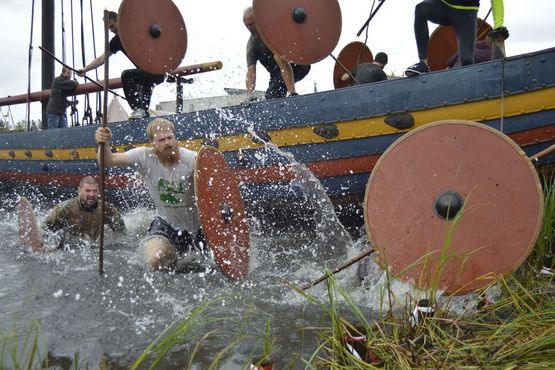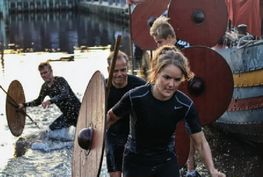Viking-Age seaborne military operations - Experimental trials with landings and combat formations
by Morten Ravn and Rune Pommer
Seaborne military operations were a trademark of Scandinavian Viking warriors. These operations were characterized by an element of surprise: Fast transport of an armed crew, along with supplies and other equipment needed for the campaigning army, and a swift landing operation aimed at surprising the opponent’s forces. Conducting the seaborne attacks, the warriors could avoid a direct confrontation with the opponent’s battle-ready warriors, and attack an unprepared enemy.
But how swiftly could the Vikings conduct the seaborne attacks, and how did they plan and execute these military operations?
Experimental trials with landings and combat formations
In 2016 and 2017 the Viking Ship Museum collaborated with archaeologist and officer in the Danish army, Rune Pommer, conducting experimental archaeological trials involving landings and combat formations. The aim was to investigate operational aspects of relevance for the Viking-Age seaborne military operations by conducting practical trials with landings and combat formations.
The results from the trials has shown that a defending opponent had ca 40 min from spotting a longship to the first warriors on board the longship were ready to begin the landing operation. Furthermore, 1.5 min were needed conducting the actual landing and disposing 60 persons in a combat formation. The experimental archaeological trials clearly show how remarkably swiftly Viking Age seaborne operations could be carried out if well-prepared and smoothly undertaken. And, judging from the written evidence, this was something of which the Vikings had a firm and efficient grasp.
Download the article




